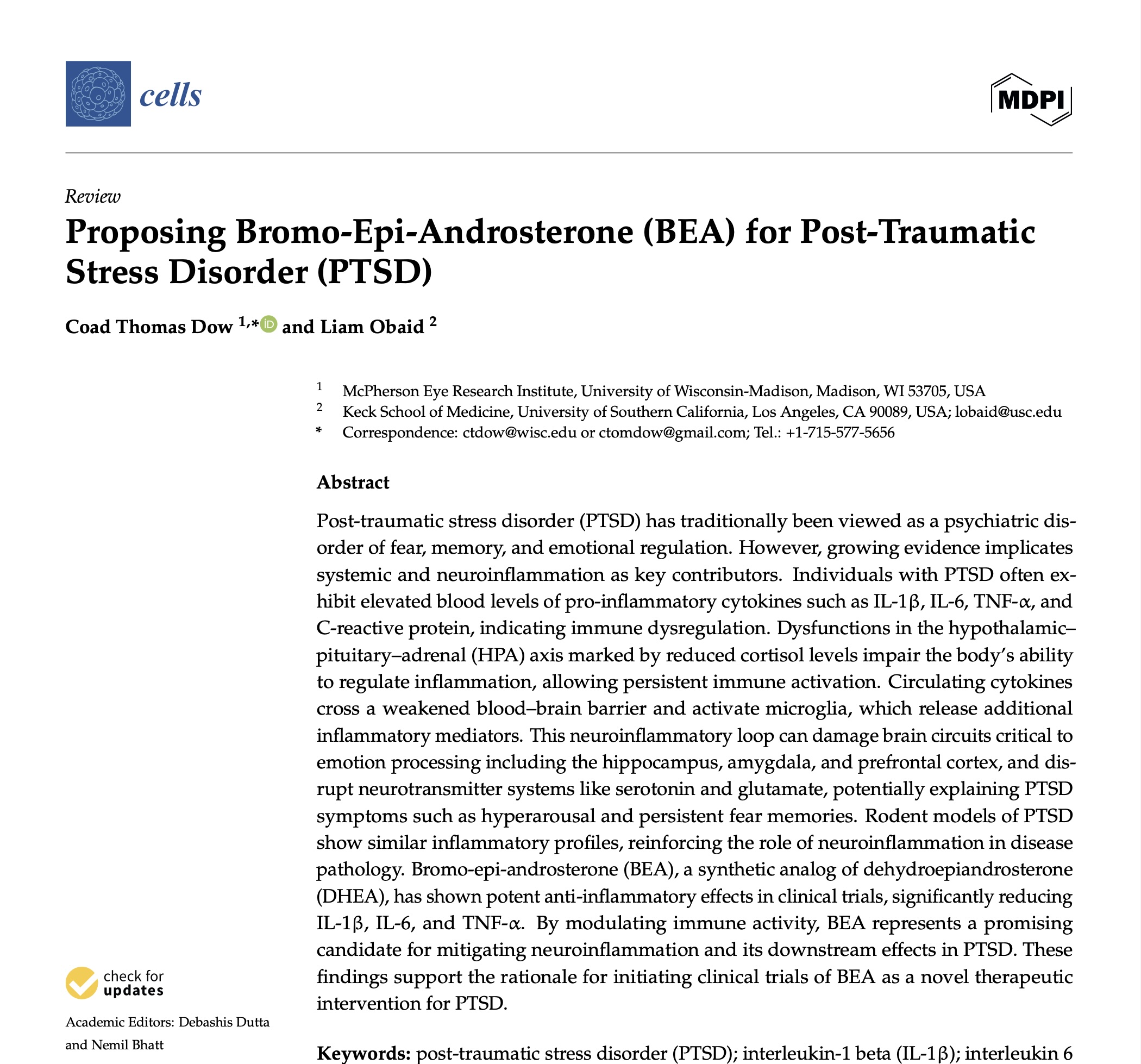
PTSD
The problem of PTSD
Approximately 13 million Americans are living with post-traumatic stress disorder (PTSD) in a given year, which represents about 5% of the U.S. adult population. Lifetime prevalence is higher, with about 6% of adults experiencing PTSD at some point in their lives.
Among Veterans, the VA website shows that of the 5.8 million Veterans served in fiscal year 2024, 14 of every 100 men and 24 of every 100 women were diagnosed with PTSD. (ptsd.va.gov/understand/common/common_veterans.asp).
PTSD mimics autoimmune disorders
PTSD shares several biological and systemic features with autoimmune disorders, particularly through immune system dysregulation, chronic inflammation, and overlapping genetic pathways. First, PTSD is associated with elevated levels of pro-inflammatory markers like IL-6, TNF-α. These cytokines are also central to several autoimmune diseases. PTSD also involves a shift to an increased Th1 (pro-inflammatory) response and reduced regulatory T-cell function.
In addition, genome-wide studies reveal significant genetic correlations between PTSD and autoimmune conditions. And both share epigenetic modifications e.g., altered DNA methylation and miRNA expression in immune pathways, such as upregulated IL-12 and TNF-α production.
Finally, Individuals with PTSD have a 1.5–2x higher risk of developing autoimmune diseases, including lupus, inflammatory bowel disease, and rheumatoid arthritis. This bidirectional relationship suggests shared mechanisms, and while PTSD is not classified as an autoimmune disorder, these parallels highlight a shared foundation of immune dysregulation and systemic inflammation.
Implications for research
Trauma-focused psychotherapies are the cornerstone of PTSD treatment, with medications generally reserved for cases where these therapies are either unavailable or insufficient. We believe that if a breakthrough medication can be found, it will come by considering the key role that autoimmune-like inflammation plays in this disorder. That is the entire focus of our research. To learn more about the merits of pursuing this research pathway, please click here.
BEA for PTSD
BEA has a unique pharmacodynamic profile in that it normalizes the inflammatory cytokines seen in disorders where there is a TH1 shift, but without causing immunosuppression. This may be beneficial because of the known negative effects of this inflammation in PTSD. For instance:
IL-6 is frequently associated with hyperarousal symptoms, such as heightened stress responses and sleep disturbances. Elevated IL-6 levels are also linked to general PTSD severity, making it one of the most consistent markers of inflammation in PTSD.
IL-1β is implicated in emotional dysregulation and may contribute to symptoms like irritability and anger outbursts. It has also been observed in connection with re-experiencing symptoms, potentially due to its role in neuroinflammation affecting memory processing.
TNF-α levels are positively correlated with total PTSD symptom severity and all three symptom clusters defined in DSM-IV-TR:
- Re-experiencing (e.g., intrusive memories, flashbacks).
- Avoidance (e.g., emotional numbing, avoiding trauma reminders).
- Hyperarousal (e.g., irritability, heightened startle response)
We will evaluate BEA treatment in conjunction with the traditional mainstays of trauma-focussed psychotherapy.
For more information on BEA for PTSD, please refer to the following publication (click to view):
